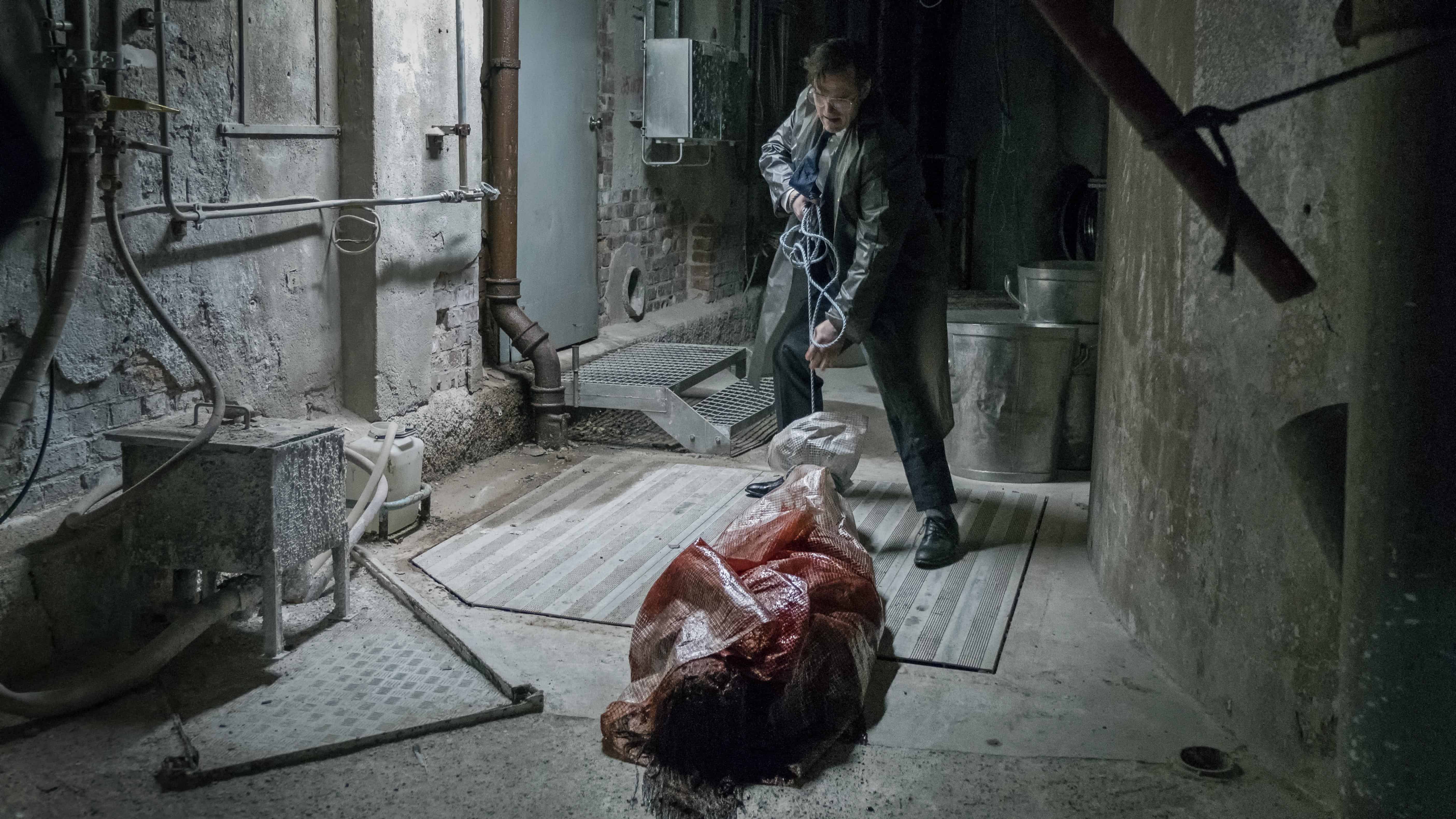
It’s been eight years since Danish director Lars von Trier was banned from the Cannes Film Festival. In the meantime, von Trier released his two-part epic Nymphomaniac, completing his ‘Depression Trilogy’ (preceded by Antichrist and Melancholia), and he finally returned to the festival – though out of competition – with The House That Jack Built, which is now hitting theaters.
This story of a serial killer (Matt Dillon) promised to be controversial, bloody, and disturbing, but could anything in this film be more upsetting than the extended home abortion sequence from the director’s cut of Nymphomaniac: Vol. 2? No, there is nothing in The House That Jack Built that any viewer would find more disturbing than the content of Antichrist, Nymphomaniac, or the endings of any of von Trier’s early films. If anything, this so-called ‘disturbing’ film is rather light, at least by von Trier’s standards. There’s also a surprising amount of humor to be found in Dillon’s Jack, an OCD-ridden serial killer on a voyage to hell.
Even for one well versed in von Trier, The House That Jack Built can be a difficult film to unpack. It’s somewhat unclear what, if anything, von Trier is trying to say with the film. Though not a part of the unofficial trilogy that preceded it, the film bears many similarities to Nymphomaniac. Stylistically, the two films are nearly identical. Von Trier’s last outing is mirrored through camera movements, lighting, tone, and format. This makes the hope that the director will break new ground somewhat devastated. It is perhaps worth noting that Nymphomaniac and The House That Jack Built are the first films von Trier has made since abandoning drugs and alcohol. The result is two films that are deeply contemplative. So what we have here is a filmmaker looking back, analyzing not only his previous work but also the man he once was, and the second man whom he has now become.
For this reason, one could even compare The House That Jack Built to Alfred Hitchcock’s Vertigo. Like Vertigo, von Trier’s is a film that reveals the ruminations of the relationship between actor and director. Von Trier, like Hitchcock, is known to have tortured his actors, particularly his female leads, to near insanity. Nicole Kidman and Bjork have spoken publicly about mistreatment from the director, though statements from von Trier’s most recent collaborators (Charlotte Gainsbourg, Kirsten Dunst, and Stacey Martin) have defended the director, perhaps signaling that he has changed his processes. Though sober and arguably easier to work with, von Trier nevertheless carries his demons and chooses to reflect upon them through The House That Jack Built; a film that asks what differences sit between filmmaker and serial killer.
The film is split up into five chapters, each depicting a murderous scenario featuring the title character. In these five chapters, the slaughtered are mostly women – with the male victims being two children. The opening chapter features Uma Thurman as ‘Lady 1’. It’s a surprisingly hilarious chapter for the opening of a supposedly brutal film. Though, is there anything more von Trier than subverting the expectation to be disgusted with some dry serial killer humor? The dynamic between Dillon and Thurman is so deliciously – and hilariously – tedious that viewers will exhale a sigh of relief when Dillon finally smashes Thurman’s face in with… wait for it… a busted car jack. The following chapter features Siobhan Fallon Hogan, an actress who has offered small, haunting performances in previous von Trier films Dancer in the Dark and Dogville. In this chapter, von Trier once again utilizes a farcical setup, this time with bloodier delights. Jack’s battle with OCD is detailed as he continually returns to the scene of his crime to check for missed blood splatter. The comic setup continues into tedium, and just as it seems like the film may be losing grasp, it cuts to Fallon Hogan’s body, wrapped in plastic, being dragged violently behind Jack’s speeding van as David Bowie’s “Fame” blasts overtop. At this moment, the film reminds viewers not to get too comfortable.
The facetiously witty tone of the film’s first hour quickly erupts into existential dread as the film enters its third chapter, and from there it becomes deeply contemplative. Jack is killing to reach a goal, yet continues to put his operations at risk. Not simply comfortable with slipping through the cracks, Jack demands to be seen. As Jack descends further into his personal inferno, von Trier turns his thought inwards. As was frequent in Nymphomaniac, philosophical digressions begin to intercede with the narrative. Talk of murder turns into talk of cathedral arches and a surprisingly fascinating deconstruction on the decomposition process of grapes. It all seems to be a bit rambling, yet it’s obvious that these ramblings are one of a brilliant thinker. As Jack reflects on his work, von Trier reflects on his own, boldly inserting clips of his own films into a digression on genocide and tyranny. The two men, who are one and the same, ask what a lifetime of work builds to.
What has Lars von Trier achieved, if anything, after thirty-four years of feature filmmaking? How many murders will it take for the construction of Jack’s house to be completed? The answers to these questions remain a mystery. The House That Jack Built offers deep thought, but on a first viewing it remains unclear what it all adds up to. One thing that is for certain is that the often funny, sometimes shocking film is surprisingly fun to watch. I often caught myself in a wide-eyed smile throughout the screening. So what does that say about me?
[Note: This is a review of the “director’s cut” which played Cannes 2018, but the version released to theaters is reportedly edited to some degree.]
Related Topics: Cannes 2018, Film Festivals, lars von trier
